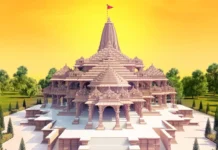Water, a fundamental necessity for all living beings, is facing critical challenges in various states across India. Groundwater, a significant source for irrigation and residential use in both rural and urban areas, has witnessed a steady decline, primarily due to overexploitation. Since 2018/19, several states, including Maharashtra, Gujarat, Karnataka, Haryana, Rajasthan, Uttar Pradesh, Uttarakhand, Madhya Pradesh, Himachal Pradesh, and Jharkhand, have been grappling with a severe water crisis.
1. Maharashtra: A State Struggling for Drinking Water Access
India’s third-largest state, Maharashtra, reported that over 19,000 villages lacked access to drinking water last year. Depletion of water from dams and reservoirs, coupled with over-exploitation of groundwater, has intensified the water crisis in the region.
2. Rajasthan: Desert State Faces Groundwater Shortage
Rajasthan, India’s sole desert state, is confronting a groundwater shortage. The drying up of the Jawai Dam, a crucial water source for the Pali-Marwar area, combined with rising temperatures and heatwaves, has exacerbated the water problems in the region.
3. Gujarat: Severe Drinking Water Issues Amidst Heat Waves
Gujarat is grappling with a severe drinking water problem, with over 500 villages in 14 districts relying on water tankers. Escalating heat waves have led to the drying up of dams, particularly in Saurashtra, Kutch, and Northern Gujarat.
Also Check: Why Bihar and UP Counted as Backward States in India?
4. Uttar Pradesh and Madhya Pradesh: Massive Water Crisis in Central India
Uttar Pradesh and Madhya Pradesh, the two largest states in terms of land and population, are among the most affected by the water crisis. The Bundelkhand region, spanning across both states, faces a substantial water crisis, compelling residents to cover significant distances to fetch water due to a drastic drop in the water table.
5. Karnataka: Bangalore’s Water Woes and Urban Challenges
Karnataka, home to India’s largest metropolis, Bangalore, grapples with water quality issues. Research indicates that 85% of the water in Bangalore’s lakes is suitable only for irrigation or industrial use, posing challenges for residents who struggle to access safe drinking water.
6. Uttarakhand: Mountain Villages Struggle for Water
Villages in Uttarakhand’s mountainous terrain are grappling with water scarcity due to reduced rainfall and spring water. Obtaining fresh water becomes an arduous task, with some villages requiring residents to trek over 1.6 kilometers for their water needs.
7. Himachal Pradesh: Shimla’s Water Woes Amidst Tourism Boom
In Shimla, the capital of Himachal Pradesh, rapid population growth, tourism influx, and dwindling water supply have led to water scarcity issues, allowing the city only a few hours of water supply each day.
8. Jharkhand: Mineral-Rich, Water-Poor
Despite being rich in minerals, Jharkhand faces acute water scarcity. Villages in various regions, including Chaibasa, Ghatshila, Sahebganj, and the state capital Ranchi, are experiencing severe water shortages, with hand pumps and taps running dry in many areas.
Understanding and addressing these water scarcity challenges are crucial for sustainable water management and the well-being of communities in these affected regions.














